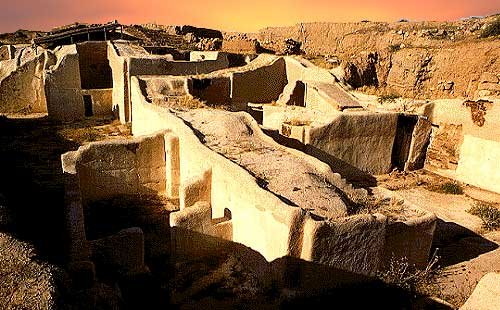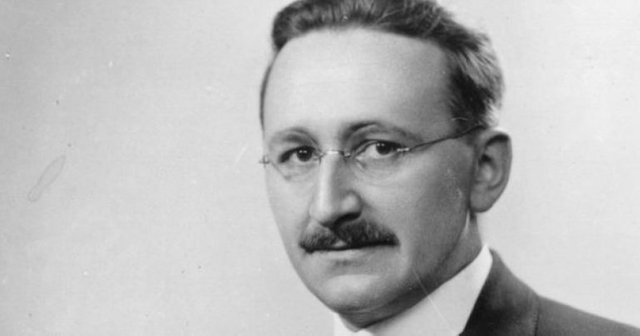History of the blockchain
what is blockchain?
10 years after the publication of Satoshi Nakamoto's famous white paper, the Blockchain and its most famous avatar, Bitcoin, continues to be talked about. If it was not until our time that it became technically feasible, this technology responds to an old ambition. Here is his story.
In their book Blockchain Revolution, published in 2016 in the United States, Donald and Alex Tapscott argue that, far from being confined to the financial sphere, Blockchain is poised to bring about profound transformations in most sectors of the economy, from health to transportation, environmental protection and the world of. An observation shared by many analysts, including Marc Andreessen, Historical investor of Silicon Valley, who sees in the Blockchain the most important invention since the Internet. The Blockchain is a decentralized and secure database, which makes it possible to establish a ledger of the transactions carried out. It can thus be used for any purpose, although it is known as a support for virtual currencies.
The popularity of the technology has been so dazzling that it almost feels like it came out of nowhere. However, the idea of a decentralized ledger to ensure the security of transactions is not new. In a research paper, Chris Berg, an Australian economist, tells the story of a decentralized information system, designed to transmit diplomatic messages and sharing many similarities with the Blockchain. This device was set up in the kingdom of Ebla, present-day Syria, in 2340 BC. Of course, it did not benefit from the technological advances on which the Blockchain is based. So it was much less efficient, but the basic idea was already there. We are talking about an information system distributed and homogenized between the different members of the network.

Ebla, the cradle of blockchain
For a decentralized currency
The idea of currencies escaping the tutelage of the state has its roots far into the past. Their most famous promoter is the Austrian economist Friedrich August von Hayek. It proposes the creation of privately issued currencies. These currencies are subject to the law of the market and the principle of free competition. According to him, these would quickly become more stable and reliable than state currencies. Considered one of the leaders of neoliberalism, Hayek inspired the policies of Ronald Reagan and Margaret Thatcher. At the beginning of the twentieth century, the German socialist Silvio Gesell spoke in favor of a decentralized currency that would depreciate over time, in order to stimulate consumption and prevent the accumulation of capital. At the end of the nineteenth century, the industrialist Ernest Solvay goes so far as to propose the outright abolition of the currency and its replacement by a legal holding of transactions.
But until the advent of the web, all these ideas are not technically feasible remain a dead letter. It was not until the beginning of the Internet that the first forms of private and decentralized currencies emerged. In 1995, the American cryptographer David Chaum launched Digicash, a decentralized electronic payment system, untraceable and secure. The device relies on software that ensures the security of transactions using cryptographic keys. Digicash went bankrupt in 1998. Computer engineer Nick Szabo imagines a whole system allowing the deployment of a decentralized digital currency called bit gold, which will never be implemented, but whose principle prefigures the architecture of Bitcoin. Wei Dai, Computer engineer and cyberpunk, lays at the same time the foundations of another digital currency, called B-money, which just like the gold bit remains at the project stage.

circa 1950: Friedrich August von Hayek (1899 – 1992), who was awarded the Nobel Prize for Economic Science in 1974. (Photo by Hulton Archive/Getty Images)
The advent of Bitcoin
10 years later, in November 2008, everything changed. Indeed, a mysterious Internet user, under the pseudonym of Satoshi Nakamoto, publishes, on a thread dedicated to cryptography, a white paper called "Bitcoin – A Peer to Peer Electronic Cash System". Within the community, the enthusiasm is immediate. The following year, Bitcoin is deployed in the form of free software. The device relies on the Blockchain to allow Internet users to carry out secure transactions peer-to-peer. This is without the intervention of a third party being necessary to guarantee their integrity. It's 2010 that the very first purchase in Bitcoin is made: an Internet user exchanges 10,000 Bitcoins for two pizzas. At the current price, such a sum would be equivalent to about 70 million euros: it is expensive pizza.
From then on, things began to accelerate. Bitcoin and the idea that it is now possible to design digital currencies on the web is gaining popularity. We are thus seeing the emergence of new cryptocurrencies promising increased transaction speed, increased anonymity or other advantages. Today there are more than 1,600 different cryptocurrencies.
In 2013, shortly after reaching the record valuation of $1,000 (850 euros), Bitcoin experienced a first crash. A year later, hackers illegally get their hands on 850,000 Bitcoins. After experiencing flamboyant prices, approaching 20,000 dollars (17,000 euros) in December 2017, Bitcoin has now stabilized around $8,000 (€6,800), but remains much more volatile than most traditional currencies.
Beyond cryptocurrencies
The Blockchain remains closely linked to the financial sphere until now. Everything changes when Vitalik Buterin sees that the Blockchain is only used as a platform for deploying virtual currencies. He then began working on an alternative public Blockchain (Bitcoin and others were all operating on the same Blockchain). Called Ethereum, it was born in 2015. Unlike its counterpart, it makes it possible to deploy smart contracts, computer protocols encoded on the Blockchain, which are triggered only when certain specific conditions have been met.
These smart contracts make it possible to imagine a large number of potential applications. Among these, they can be used as part of a system of autonomous taxis, capable of automatically billing their passengers. Or to increase the transparency of the value chain. But also facilitate online voting, fight against "blood diamonds", or even, for some, change the face of the company by replacing some of the managers. For blockchain to truly transform the world, it is necessary to solve certain problems, including its energy consumption. One thing remains certain, however: technology can no longer be considered as a simple hobby for geeks or a speculative tool.
Questions
What is blockchain?
For Marc Andreessen, a long-time Investor in Silicon Valley, blockchain is the biggest invention since the Internet, but what exactly is it? The blockchain is a decentralized and secure database that makes it possible to establish a tamper-proof ledger of the transactions carried out.